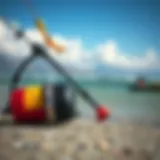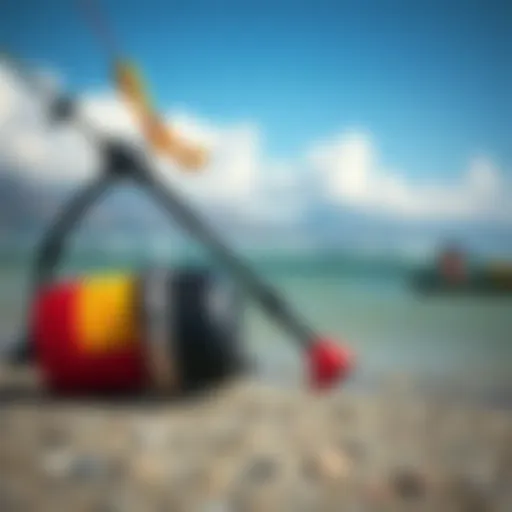Kiteboarding in Punta Cana: A Complete Guide
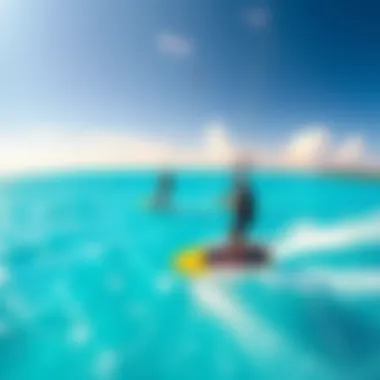
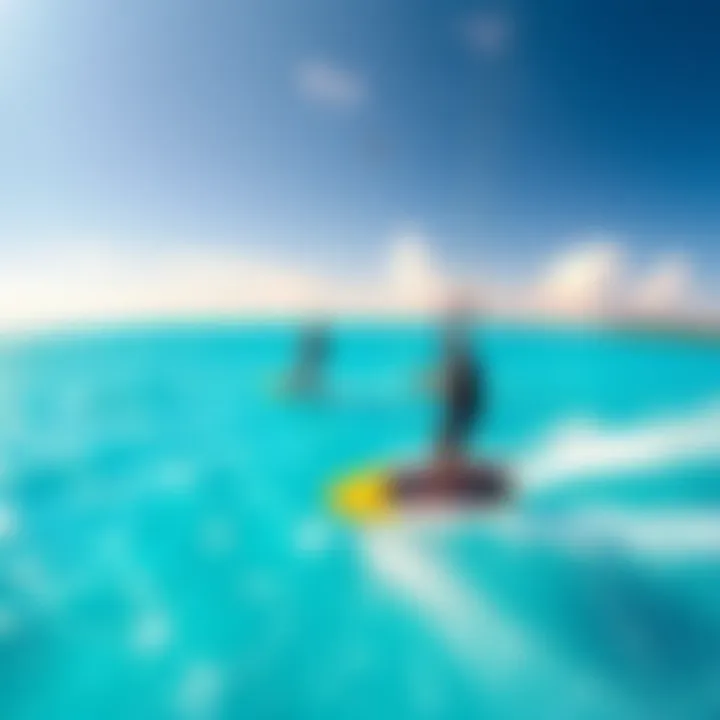
Intro
Kiteboarding, a sport that fuses the thrill of surfing with the artistry of flying, has evolved into a favored activity for those seeking adventure under the sun. In Punta Cana, where turquoise waters meet golden sands, the possibilities for kiteboarding are vast and enticing. The allure of kiteboarding here is not just about the adrenaline rush; it’s about connecting with nature, harnessing the wind, and riding the waves. With the Dominican Republic's favorable weather conditions, this locale caters to both seasoned kiteboarders and those just dipping their toes into the sport.
Understanding the nuances of kiteboarding in Punta Cana can significantly enhance one’s experience. Whether it’s about selecting the right gear, mastering techniques, or understanding the local conditions, many factors contribute to a successful and enjoyable outing. This guide aims to shed light on essential aspects like gear and equipment, effective techniques, and safety practices, all tailored to cater to kiteboarders, adventure seekers, and recreational athletes alike.
Gear and Equipment
When gear comes to kiteboarding, it's crucial to be equipped with the right tools for your skill level. The equipment is like an extension of the body, and finding the perfect fit can transform your experience.
Essential Kiteboarding Gear for Beginners
For those new to the sport, investing in the right starting equipment is essential. Here’s a rundown of must-have items:
- Kite: Opt for a beginner-friendly model with a larger surface area. This helps with lift and stability, particularly on lighter wind days.
- Board: A larger board provides more buoyancy and stability, which is vital for novices. Consider a twin-tip board, as it accommodates easier transitions.
- Harness: Choose a comfortable harness that fits snugly. A waist harness is common for beginners.
- Safety Gear: A helmet and impact vest can provide important protection. Don’t skimp on safety just for style.
Advanced Equipment for Experienced Riders
As skills progress, so should your gear. Experienced riders might look for equipment that enhances performance and allows for more technical tricks:
- Kite: Look for a performance-oriented kite with a smaller size; this allows for better maneuverability, particularly in stronger winds.
- Board: Smaller, high-performance boards can facilitate cutting through waves and executing jumps with greater ease.
- Control Bar: Upgrade to a control bar that offers responsive handling.
- Bindings: Consider boots for added support when tackling challenging conditions or attempting tricks.
"The right gear can make the difference between an enjoyable day on the water and an exhausting one."
Techniques and Tips
Mastering the art of kiteboarding involves not just confidence, but also technique and awareness of surroundings. Here’s how to enhance your skills:
Safety Practices for Kiteboarding
Safety should always be at the forefront. Here’s a short checklist to keep in mind:
- Know the Area: Understand the local conditions and be aware of potential hazards, like rocks or strong currents.
- Check Weather: Before heading out, ensure conditions are favorable for your skill level. Wind speeds can dramatically change.
- Buddy System: Kiteboarding is often safer and more fun with a partner. Watch each other’s backs.
Training Techniques to Improve Your Skills
To become a proficient kiteboarder, consistent practice is key. Here are some techniques to consider:
- Take Lessons: Enroll in a local kiting school. Professionals can fast-track your learning and instill safe practices.
- Video Analysis: Record your sessions. Reviewing your technique can help identify areas for improvement.
- Practice Launching: A key skill is learning how to launch and land the kite correctly. Focus on mastering this.
Exploring kiteboarding in Punta Cana is an invitation to mix excitement with serenity. Recognizing the importance of proper gear and techniques is vital to fully enjoy what this stunning location has to offer. More than just a sport, it’s an experience that nourishes the adventurous soul.
Prolusion to Kiteboarding
Kiteboarding stands out as a thrilling sport that combines elements of surfing, windsurfing, and paragliding. For those who live for adventure and the rush of adrenaline, understanding kiteboarding is like unlocking a door to a world filled with breathtaking moments and exhilarating experiences. This section aims to clarify what kiteboarding entails and why it has become a staple in adventure sports, particularly in tropical paradises like Punta Cana.
In essence, kiteboarding involves riding a board across water while being powered by a large, controllable kite that captures the wind. The exhilarating feeling of gliding over waves and the rush from harnessing wind power creates a unique experience favored by many. Moreover, kiteboarding isn't just about the thrill; it demands skill, focus, and an understanding of environmental elements, making it both a physical challenge and a mental game.
The benefits are manifold. Beyond the obvious physical workout, participants can engage with nature and enjoy stunning scenery. Most notable is the camaraderie found within the kiteboarding community — it's a blend of thrill-seekers, sports enthusiasts, and travelers, all sharing a passion for the wind and sea.
However, alongside its attractions, kiteboarding comes with a set of considerations. Factors like weather conditions, proper equipment, and safety practices are not just important but essential to ensure a safe and enjoyable experience. This consideration is particularly vital in regions like Punta Cana, where ideal conditions attract both novice and seasoned kiteboarders alike.
All in all, this section sets the stage for what follows, providing a holistic viewpoint that combines the essence of kiteboarding with the particulars of the Punta Cana experience.
Why Punta Cana?
Punta Cana stands as a beacon for kiteboarding enthusiasts, merging tropical beauty with ideal sporting conditions. This Caribbean paradise is not just about white sandy beaches and turquoise waters; it has become synonymous with the thrill of kiteboarding. In this section, we’ll explore the geographical advantages, splendid climate, and easy access to facilities that make Punta Cana a top pick for kiteboarders.
Geographical Advantages
The geographical layout of Punta Cana plays a significant role in its kiteboarding appeal. The coastline here is dotted with expansive beaches that are often flat, making them perfect for launching and landing kites. The calmness of the ocean waters, especially near beaches like Bavaro, creates a playground for both beginners and seasoned pros.
Furthermore, the wind patterns in this region are remarkably consistent. Punta Cana is located where the Atlantic Ocean breezes can sweep across the beaches, providing the steady winds favorable for kiteboarding. These geographical features combine to create an environment that’s not just visually stunning but also extremely functional for the sport.
Ideal Climate Conditions
Nestled in the tropical zone, Punta Cana boasts a climate that's just about perfect for outdoor sports year-round. Kiteboarders flock to this destination from all corners of the globe, largely because of the consistently warm temperatures, which range from 75°F to 85°F.
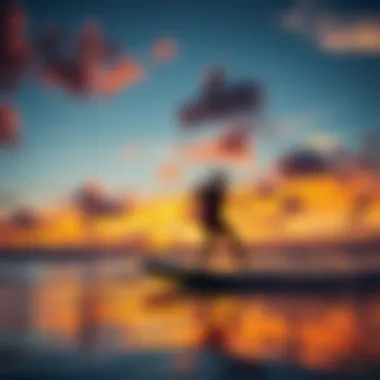
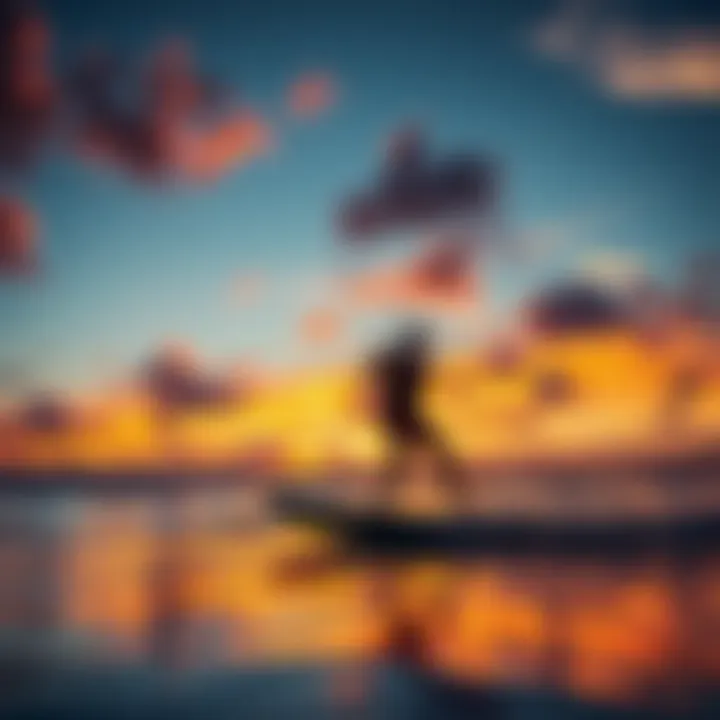
"Kiteboarding in Punta Cana is not just an activity; it’s about embracing the weather that welcomes you every day."
The trade winds that blow across the area typically peak between 15 to 25 knots during the winter months, offering thrilling rides and more challenging experiences for those looking to step up their game. Seasonal weather changes are minimal, which means that there's practically no off-season.
Access to Kiteboarding Facilities
Accessibility of kiteboarding schools and rental facilities in Punta Cana adds another layer of convenience. Several local operators provide lessons, equipment rentals, and guided sessions catering to all skill levels. This makes it straightforward for newcomers to learn the ropes as well as for experienced riders to find the latest gear.
- Schools like Kite Club Punta Cana offer structured courses from beginner to advanced levels.
- Rental stores stock a wide variety of kites including popular brands like Naish and Cabrinha, ensuring that whatever your needs, you'll find suitable equipment.
- Moreover, the proximity to established kiteboarding hotspots means less time spent traveling and more time on the water.
With these distinct features, it’s clear why Punta Cana has become a prevailing choice for kiteboarding aficionados. The blend of a welcoming climate, convenient facilities, and an empowering geographical setup sets the scene for an unforgettable kiteboarding adventure.
Popular Kiteboarding Spots in Punta Cana
Kiteboarding is as much about the location as it is about the sport itself. Punta Cana, with its stunning beaches and favorable winds, offers various spots that cater to kiteboarders of all levels. Each location has its own charm and characteristics, which can greatly influence the kiteboarding experience. Choosing the right spot can enhance your adventure, making it essential to understand the unique features and set up of each area.
Bavaro Beach
Bavaro Beach stands as one of the premier kiteboarding locations in Punta Cana. Its crystal-clear waters, coupled with steady winds, create an ideal environment for both beginners and seasoned kiteboarders. The beach spans for miles, giving ample room to practice without feeling crowded. What truly sets Bavaro apart is its vibrant atmosphere; there are numerous beach bars and restaurants that allow for a lively retreat after a session on the water.
The optimal wind conditions generally blow from the east during the peak season, making the beach perfect for kiteboarding all year round. However, being mindful of the water conditions is vital. The shallower areas are excellent for beginners, while the deeper waters challenge more experienced riders looking to show off their maneuvers. Just keep an eye on the tides; they can affect the setup of your gear.
Macao Beach
Macao Beach offers a slightly different vibe compared to Bavaro. Known for its rough terrain and natural beauty, this spot attracts an adventurous crowd who appreciate a more untamed environment. Macao is less commercialized, which means fewer distractions but also a stunning landscape that’s untouched by heavy tourism. It presents excellent wind conditions, usually best enjoyed in the afternoon, when the sea breeze picks up.
For those looking to ride the waves, Macao's rolling surf can provide an enticing challenge. The beach also has a few local instructors available, making it an accessible spot for newcomers eager to learn. While the experience can be invigorating, it's important to handle the conditions wisely, as the waves can be quite strong. Always check local advice, especially if you're unfamiliar with the area.
Cabeza de Toro
Cabeza de Toro is lesser-known but equally captivating. Its idyllic lagoons and consistent wind draw those wanting a serene kiteboarding experience without the crowds. The shallow waters offer a safe environment for those just starting to find their footing in kiteboarding, making it an excellent training ground. This spot is particularly suited for freestyle maneuvers and training sessions, as the calm waters allow for practicing tricks without the worry of larger ocean swells.
Besides the practical advantages, the surrounding area enhances the overall experience with local eateries serving up fresh seafood and tropical drinks. Hence, it’s held in high regard by those who love to combine their passion for kiteboarding with lovely surroundings. Like other spots, it’s best to keep an eye on the weather patterns; however, many find the stable conditions at Cabeza de Toro are a breath of fresh air.
In summary, whether you’re cruising over the gentle waves at Bavaro Beach, challenging yourself at Macao, or enjoying the calm at Cabeza de Toro, each kiteboarding spot in Punta Cana offers a unique flavor that caters to all styles and levels. The secret? Prioritize where you go based on what kind of experience you’re after.
Essential Kiteboarding Gear
Kiteboarding isn't just about the thrills and spills, it heavily leans on the gear you choose to use. Getting outfitted with the right equipment can dramatically enhance your experience on the water—think of it as the backbone of your kiteboarding adventure. Having the correct items not only impacts your performance but also plays a pivotal role in safety, comfort, and enjoyment.
Kites: Types and Sizes
When it comes to kites, variety is the spice of life. Kite types generally divide into two categories: inflatable kites and foil kites.
- Inflatable Kites: These are probably the most common choice for kiteboarders. They offer a solid amount of lift and stability, making them suitable for all levels of riders. Plus, they’re easier to handle and safe in the event of a crash.
- Foil Kites: A bit more complex but favored if you’re looking for a light and efficient option. They don’t use air bladders; instead, they depend solely on the airflow to stay inflated. They can fly in lower winds but require a more skilled touch.
Now, sizes matter—larger kites catch more wind, making them ideal in light winds, while smaller kites are better for high winds. Here's a handy rule of thumb:
- 7-9 meters: Best for strong winds (over 20 knots)
- 10-12 meters: Ideal for moderate winds (around 15-20 knots)
- 13-15 meters: Suited for lighter winds (under 15 knots)
Choosing the right size is like finding the perfect pair of shoes—too big or too small, and it’ll be a cumbersome experience.
Boards: Choosing the Right Fit
Selecting a kiteboard is akin to finding the right dance partner. Each board has its own quirks and characteristics tailored for different styles and preferences. Here are a few aspects to take into consideration:
- Type of Riding: Freestyle boards tend to be shorter and wider for quick maneuvers, whereas freeride boards are longer and narrower, making them a better choice for cruising.
- Skill Level: If you’re on the greener side of things, opt for a board with ample surface area. This provides stability and assists in riding upwind. Advanced riders, on the flip side, might lean towards more specialized boards that promote high performance.
- Foot Straps or No Straps: Straps give you security, especially when jumping, while going without straps is generally more forgiving during crashes.
Ultimately, picking the right board is about matching your style and skill set, ensuring that you ride smoothly with confidence.
Safety Equipment and Accessories
Safety is paramount in kiteboarding—no one wants to find themselves in a tight spot without the proper gear. Alongside your kite and board, certain accessories can be lifesavers:
- Harness: This connects you to the kite, distributing the pull across your body. A comfortable harness is vital, as it allows you to manage power while freeing your hands.
- Helmet: Not just for looks! Protecting your noggin from unexpected falls or collisions is worth every penny.
- Impact Vest: Offers an additional layer of protection for your torso, especially during tricks or rough waters.
- Safety Leash: This is a must! If something goes awry, it keeps the kite attached to you, preventing it from becoming a rogue projectile on the beach.
- Personal Floatation Device (PFD): Depending on local regulations, wearing a PFD could be a requirement. It’s also a smart choice for added safety.
Proper gear not only boosts your confidence, but it also empowers you to push boundaries on the water. Equip yourself well and you’ll ride with peace of mind.
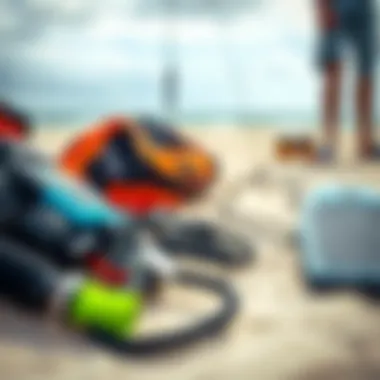
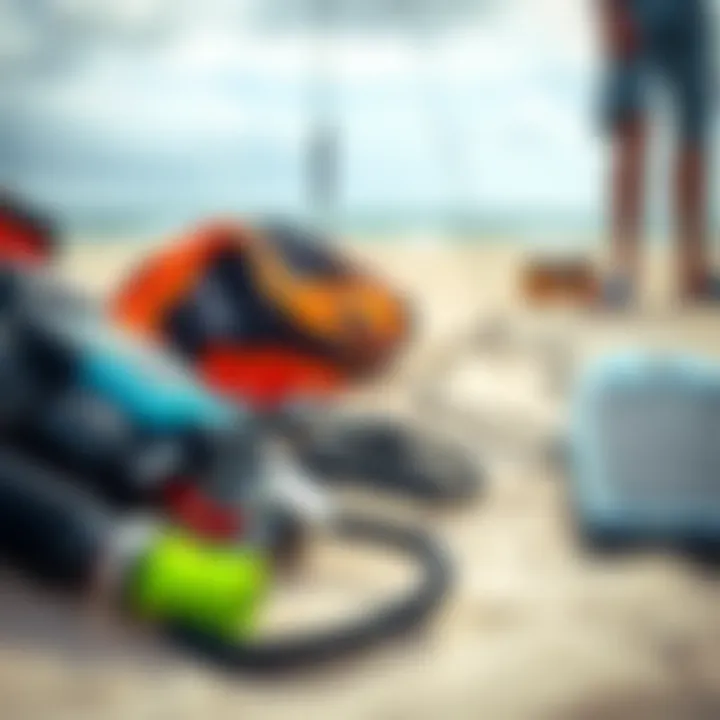
Remember: Safety is sexy. Always equip yourself with the essentials before hitting the waves!
Everything you bring into the water has purpose, whether it’s a small accessory or a vital piece of equipment. Make informed selections, enhance your experience, and kiteboard like a pro!
Techniques and Learning
Understanding the techniques and learning involved in kiteboarding is essential for anyone looking to thrive in this exhilarating sport. The journey of mastering kiteboarding doesn't just hinge on the right gear or the best locations; it significantly depends on the techniques adopted and the level of learning achieved. For beginners, grasping the core fundamentals lays a solid groundwork. For those a bit more seasoned, focusing on intermediate skills can boost confidence and performance in the waters of Punta Cana. Finally, advanced maneuvers can elevate one’s abilities to impressive heights.
Beginner Techniques
Starting with the basics is crucial for newcomers to kiteboarding. Familiarizing oneself with essential maneuvers can ease the learning curve substantially. Here are some key beginner techniques:
- Kite Control: Learning how to steer the kite is the very first step. Try practicing on land with a trainer kite to grasp the basics of control before hitting the waters.
- Body Dragging: This technique helps a lot in getting a feel for the water and wind. It involves being pulled through the water by the kite without using a board. It’s an excellent way to practice without worrying about a board.
- Water Starts: This is where the real magic begins. Learning to smoothly transition from the water to standing on the board requires coordination and timing with the kite.
It's recommended to take a few lessons with local kiteboarding schools, which often provide expert guidance tailored to individual learning paces.
Intermediate Skills to Master
Once you’ve got the hang of the basics, it’s time to ascend to intermediate skills, which are crucial to enhance your overall kiteboarding experience.
- Upwind Riding: Mastering the art of riding upwind is pivotal. This skill allows you to return to your starting point after riding without being blown downwind.
- Jumps and Ollies: Getting some air adds thrill to your sessions. Learning how to jump and perform an ollie gives you the joy of soaring above the waves. Start small and gradually increase your height and control.
- Transitions: Smoothly switching directions while riding signifies an important leap in skill. This requires good kite control and balance, providing a more enjoyable ride.
Practicing these techniques regularly will bolster confidence and make each kiteboarding session even more rewarding.
Advanced Maneuvers
With a solid foundation and intermediate skills under your belt, you may be ready to dive into advanced maneuvers. These techniques can really impress and push your boundaries further.
- Kiteloops: A thrilling move where you loop the kite while pulling hard to gain airtime. This maneuver demands precise timing and strong kite control.
- Handle Passes: Often used in tricks, a handle pass involves passing the control bar from one hand to the other mid-jump. This is a dazzling move that takes lots of practice but looks superb when executed well.
- Freestyle Tricks: Things like spins and flips can take your riding to a whole new level. As you become more comfortable, experimenting with different freestyle tricks can make sessions more exciting.
In Punta Cana, many seasoned kiteboarders enjoy getting together to share tips on such tricks, enhancing not only skills but also community ties.
"The journey of kiteboarding is as rewarding as the destination. Each technique learned opens up new horizons of experience."
By developing these elements, kiteboarders at all levels can continuously enhance their enjoyment and prowess in the sport. Connecting with local instructors or seasoned kiteboarders can provide invaluable insights and accelerate the learning process. For further information about reliable kiteboarding schools or local events, consider visiting Wikipedia or joining community forums on platforms like Reddit. This interaction fuels the learning experience and bonds the kiteboarding community in Punta Cana.
Safety Considerations
Safety is paramount when kiteboarding, especially in a vibrant locale like Punta Cana. Understanding the nuances of safety not only protects individuals but also enriches the overall kiteboarding experience. Accidents can happen in the blink of an eye, and being prepared is the key to avoiding mishaps while enjoying the thrill of gliding across the water.
Understanding Weather Conditions
Kiteboarding relies heavily on favorable weather, and Punta Cana, with its tropical climate, provides an excellent backdrop for this sport. However, it’s crucial to be aware of wind patterns, gusts, and potential storms. Here are some important elements to consider:
- Wind Direction and Speed: Knowing the wind's direction helps determine the safest spots to launch and land. Too strong of a wind can lead to loss of control.
- Local Forecasts: It’s best to check reliable sources like weather apps before hitting the water. Storms can develop quickly in tropical locations.
- Tides and Currents: Changes in tides can affect water conditions and influence how kiteboarders navigate the water. Be aware of where currents are strongest to avoid potential problems.
To enhance your understanding, it’s often valuable to join local kiteboarding groups or communities where seasoned kiteboarders share their insights on weather specifics.
Managing Risks while Kiteboarding
Even for experienced kiteboarders, every session carries inherent risks. Knowing how to manage these risks can be the difference between an exhilarating ride and a harrowing experience. Here are some effective strategies to consider:
- Pre-Flight Checks: Always inspect your gear before launching. Look for wear and tear on the lines and the kite itself.
- Know Your Limits: Beginners should never push beyond their skill set. If conditions look daunting, it’s wise to stay shore-bound.
- Learn to Fall Safely: Understand the best positions to fall in case of a sudden mishap. This knowledge can significantly reduce injuries.
Adopting safety protocols not only benefits individual kiteboarders but also the broader kiteboarding community by fostering a culture of safety.
Buddy System and Emergency Protocols
Kiteboarding alone can sometimes be a risky endeavor. Having a partner enhances safety significantly and allows for effective communication in emergencies. Here’s why and how to integrate this practice into your kiteboarding sessions:
- The Buddy System: Always kiteboard with a partner. In case of a problem, having someone nearby can provide immediate assistance.
- Emergency Protocols: Establish and discuss emergency procedures before heading out. This could range from signaling to each other to protocols for getting help if needed.
- Practice Rescue Techniques: Learning how to help a fellow kiteboarder in distress can make a world of difference. Training in basic rescue methods not only prepares you for accidents but can turn potential crises into manageable situations.
"Safety is not a gadget but a state of mind."
Engaging with local kiteboarding schools can provide structured training in not only kiteboarding techniques but also in safety practices, ensuring that you’re well-prepared for whatever the day on the water may bring.
In summary, safety considerations in kiteboarding are multi-faceted, encompassing an understanding of weather conditions, proactive risk management, and the implementation of effective emergency protocols. By prioritizing these elements, both newcomers and seasoned kiteboarders can enjoy the thrill that Punta Cana has to offer while minimizing risks.
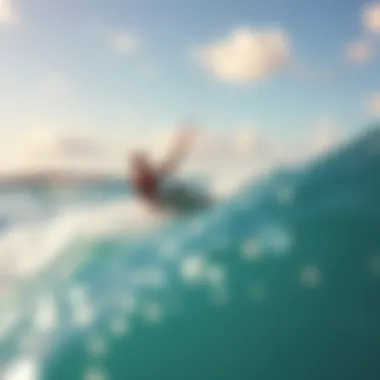
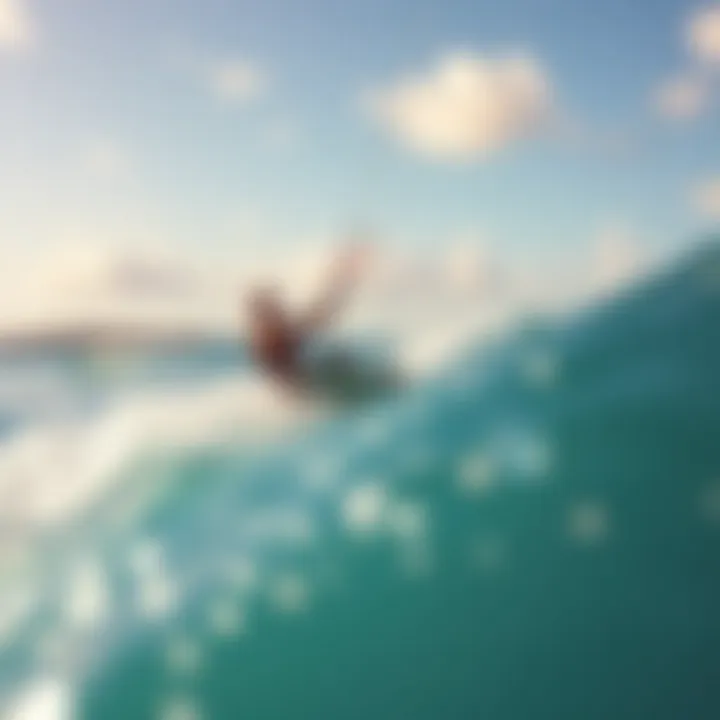
Community and Events
Local Kiteboarding Schools and Trainers
Kiteboarding in Punta Cana is not just about the thrill; it’s also about community. Local kiteboarding schools play a key role in nurturing this sense of belonging. Well-established schools like Kite Club Punta Cana and Punta Cana Kiteboarding offer lessons ranging from beginner to expert levels. They not just teach the ropes but also ensure safety, making the learning process smooth and enjoyable. Choosing an experienced trainer is crucial; they are your guides in this mesmerizing sport. These schools also foster an environment where both newcomers and seasoned kiteboarders can mingle, sharing tips and tales. The camaraderie you find here is a significant aspect of what makes kiteboarding in Punta Cana special.
The certified trainers often hold group classes, allowing students to learn from each other. This collective spirit often accelerates the learning curve, especially for beginners who may feel intimidated. Plus, each session is an opportunity to make friends who share your passion.
Annual Kiteboarding Competitions
Punta Cana hosts several kiteboarding competitions every year, which bring together local talent and international kiteboarders. Events like the Punta Cana Kite Fest are not merely competitions but celebrations of skill, passion, and community spirit. These events invite enthusiasts and pros alike, providing a platform for showcasing incredible tricks and maneuvers.
The competition atmosphere is electric. Spectators line the beach, lending their cheers to participants who pull off astonishing jumps and turns. Winners earn not just prizes but also recognition that can lead to sponsorship opportunities. It's worth noting that these competitions often feature categories for various skill levels, ensuring everyone gets a chance to shine. They're a fantastic way for beginners to watch seasoned athletes in action, gaining inspiration and motivation to elevate their own skills.
Networking with Other Kiteboarding Enthusiasts
Creating connections within the kiteboarding community can be invaluable. Networking doesn’t just enhance one's skills; it also opens doors to kiteboarding opportunities and friendships. In Punta Cana, you’ll find plenty of spots to meet others—whether it’s sharing stories at a beach bar after a long day on the water or participating in kiteboarding meetups organized by locals.
Online forums on platforms like Reddit or Facebook often have active kiteboarding groups specific to Punta Cana. Joining these groups can connect you with a network of local riders looking to hit the waves or share advice on the best gear and techniques.
Additionally, many instructors and seasoned kiteboarders are more than happy to provide tips or even invite newcomers to join in on practice sessions. Making these connections can significantly enhance your experience, making you feel like part of a tight-knit community that celebrates the beauty and thrill of kiteboarding.
Strong connections in the kiteboarding community can enhance your experience and help you improve quickly!
In summary, immersing yourself into the community of kiteboarding in Punta Cana not only enriches your skills but also offers you the chance to forge lasting friendships. Connecting with local schools, participating in competitions, and networking with fellow enthusiasts adds layers to the kiteboarding experience that go beyond just the sport itself.
Environment and Conservation
Kiteboarding in Punta Cana is not just an exhilarating experience; it intertwines with the natural environment in profound ways. Recognizing the importance of environmental conservation is pivotal not only for preserving the beauty of this tropical paradise but also for ensuring the sport's sustainability for future generations. As kiteboarders, understanding how our actions impact the marine ecosystems we enjoy can deepen our appreciation and responsibility towards these vibrant landscapes.
Impact of Kiteboarding on Marine Life
Kiteboarding, while a thrilling sport, can have unintended consequences on marine life. The very essence of kiteboarding connects us to the ocean's vast ecosystem, which houses a trove of biodiversity. However, factors such as noise pollution from kites, the physical presence of equipment, and human interaction can disturb delicate habitats. Specific areas may find marine animals like sea turtles or nesting birds affected by increased presence of kiteboarders.
Moreover, the use of certain materials and equipment can lead to littering or pollution. For example, discarded kite components or harness pieces, while small, can contribute to marine debris, affecting wildlife and water quality. It's imperative for kiteboarders to remain vigilant about their impact and practice responsible behaviors, such as:
- Choosing equipment made from environmentally friendly materials.
- Avoiding areas that are known for sensitive wildlife.
- Respecting natural habitats and minimizing disturbances to marine life.
Ultimately, by doing our part to understand and mitigate these impacts, we can ensure that kiteboarding can thrive alongside the natural environments that make it special.
Sustainable Practices for Kiteboarders
To keep the thrill alive in a sustainable manner, kiteboarders can adopt several practices aimed at protecting Punta Cana's pristine waters and beaches. Implementing eco-friendly routines not only safeguards the environment but enhances the kiteboarding experience. Here are some sustainable practices to consider:
- Gear Maintenance: Regularly check and maintain your kites and boards to prolong their lifespan and minimize waste.
- Eco-Friendly Products: Explore brands that prioritize sustainability and use renewable resources in their products.
- Water Cleanliness: Always clean up after yourself to avoid leaving trash that could endanger marine ecosystems.
- Community Involvement: Participate in local beach clean-up events or conservation initiatives that foster a shared sense of stewardship among kiteboarders.
"Caring for our ocean isn’t just about the fun we have on our boards; it's about the legacy we leave behind."
By weaving these sustainable practices into your kiteboarding routines, you contribute to a larger movement of environmental awareness and protection. Together, kiteboarders can preserve the breathtaking landscapes that draw us to Punta Cana while ensuring that future wave-chasers can equally relish the sport in harmony with nature.
The End
As we round off our exploration of kiteboarding in Punta Cana, it's essential to reflect on the journey taken—from understanding the thrill of the sport to recognizing its impact on the vibrant local community. This conclusion serves as a comprehensive wrap-up, underscoring the myriad experiences and insights that kiteboarding in this beautiful locale offers.
Reflecting on the Kiteboarding Journey
Kiteboarding is not just a recreational activity; it's a transformative experience. For many enthusiasts, the first time they feel the rush of wind against their face while gliding over water creates a lasting memory. The joy derived from this experience extends beyond mere adrenaline; it's about connection—with nature, the ocean, and like-minded thrill-seekers.
The warm Caribbean waters of Punta Cana provide an ideal setting, combining stunning scenery with gentle winds. The skill acquisition process, from novice maneuvers to advanced tricks, fosters personal growth and perseverance. Each progression on the water represents a victory against our own limits. This journey can be a source of inspiration, motivation, and a deeper understanding of one's self.
Communicating with fellow kiteboarders and instructors not only enhances technical proficiency but creates community bonds. Sharing tips, stories, and experiences becomes a common thread, weaving individuals into a larger fabric of kiteboarding culture. The friendships formed here can last a lifetime, proving that the sport is as much about connection as it is about personal achievement.
Future of Kiteboarding in Punta Cana
Looking towards the horizon, the future of kiteboarding in Punta Cana appears promising. With the increase in global interest in adventure sports, Punta Cana's kiteboarding scene is ripe for growth. Local schools and infrastructure are likely to expand, catering to newcomers and skilled kiteboarders alike. Expanding facilities can offer a broader range of lessons, accommodations, and equipment rental, making it even easier for enthusiasts to travel and engage with the sport.
Additionally, as sustainability becomes a primary concern for many, kiteboarding communities are actively seeking ways to minimize environmental impact. Efforts to educate participants on sustainable practices will ensure that the natural beauty of the Dominican Republic is preserved for years to come. Partnerships with conservation organizations may lead to initiatives that protect marine life while promoting responsible recreation.
"Each session on the water is not just a day out; it’s a piece of a larger tapestry woven from the threads of perseverance, camaraderie, and passion for the waves."
As kiteboarding grows, so does our appreciation for what it brings—not just to those who ride the waves, but to the entire ecological and social environment of Punta Cana.
For further information on kiteboarding and its practices, one might visit reputable sources like the International Kiteboarding Organization.
Encouraging responsible kiteboarding not only enhances our experience but ensures that future generations can also enjoy the thrill that comes with it.


